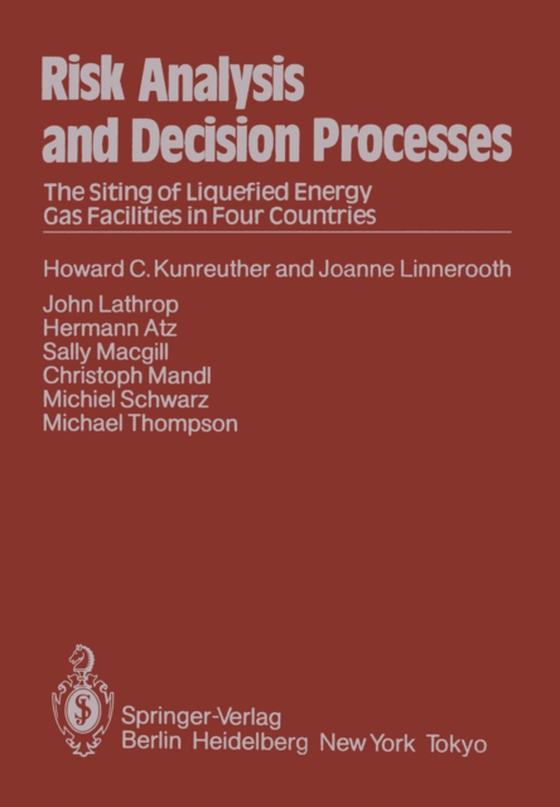
Risk Analysis and Decision Processes e-bog
875,33 DKK
(inkl. moms 1094,16 DKK)
For old and new studies in decision making and risk analysis, this book should stand at tlle watershed. Studies of conflict resolution and public policy will surely now have to take account of the model investigation provided by the IIASA team, and many things will not be the same again. This is a report of inquiries into the siting of liquefied energy gas (LEG) facilities in the Federal Republ...
E-bog
875,33 DKK
Forlag
Springer
Udgivet
6 december 2012
Genrer
Ecological science, the Biosphere
Sprog
English
Format
pdf
Beskyttelse
LCP
ISBN
9783642821288
For old and new studies in decision making and risk analysis, this book should stand at tlle watershed. Studies of conflict resolution and public policy will surely now have to take account of the model investigation provided by the IIASA team, and many things will not be the same again. This is a report of inquiries into the siting of liquefied energy gas (LEG) facilities in the Federal Republic of Germany, the Netherlands, the United Kingdom, and the United States. The risks of transporting this highly combustible stuff, and the economic benefits of being able to bring a natural energy source from one side of the globe to the other, holding it, and piping it out as needed, make LEG a model case for studying the public response to dangerous technology. The dangers of LEG are differ- ent from those of nuclear power, for instance, where the response too often becomes entangled with the fear of nuclear war. The dangers of LEG include unco~trollable explosions, rather than insidious contami- nation. But the degree of dangerousness is very much of the same order as that of nuclear power, and is at least as difficult to assess. In four different countries the constitutional procedures involved in obtaining approval of nuclear or LEG facilities are on record. The four case histories here are a model for comparative study of conflict resolu- tion. The period over which the negotiations developed is much the same.
 Dansk
Dansk

